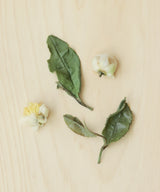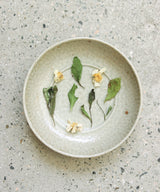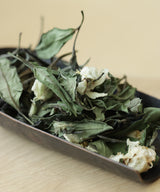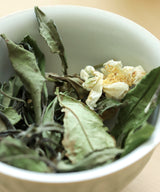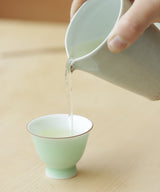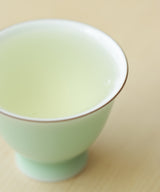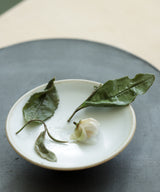Laoshan White & Tea Blossoms
茶花崂山白茶
Harvest
Laoshan White: October 2020, Tea blossoms: November 2021
Origin
Laoshan, Qingdao
This is a beautiful and experimental white tea comes to us from the craftsman Mr. Tang. Mr. Tang’s family are generational tea farmers in Laoshan Mountain of Qingdao, Shandong. Shandong, located in Northeastern China, is named after Mount Lao, a magnificent mountain range recognized by its striking, slim, elongated cliffs. The many small plots that make up Mr. Tang’s tea farm are scattered along this coastline, at the foot of Mount Lao. Some are distributed right along the beaches, exposed to the salty wind that blows off of the water, while others are tucked slightly up into the forested hills, protected by the pine trees and the mountain behind them.
In the spring of 2016, Mr. Tang visited the tea forager known as Hunter in the wild mountains of Zhenghe, Fujian, where white teas originated from. He was inspired by the pureness of the white teas he tasted there and, upon returning home, decided to experiment with making white teas from his small farm in Laoshan.
Laoshan is a very unique tea producing area in China. It is as far North as a tea region can be, and at the highest latitude, before temperatures become too cold for tea trees to survive.
The small farms in Laoshan have Mount Lao on one side, and are otherwise surrounded by ocean. The air here has very high humidity, and it sees longer winters of frost and snow than tea regions further South. Another special feature of Laoshan is that the water that irrigates the tea trees comes from natural springs that run through Mount Lao. This water is very pure and high in the minerals it collects from the cliffs of the mountain. It is fascinating to taste a tea inspired by Fujian white teas, and yet inflected with the very particular characteristics of this terroir.
To make this tea fresh leaves are handpicked in October and are then crafted following traditional methods of withering and sun drying for 48-60 hours. We consider white teas, whose leaves are allowed to dry slowly and naturally without any application of external heat, to still be “alive.” Even once fully dried, these tea leaves will retain the maximum amount of their enzymes and nutrients. Well made white teas can be aged for many years, and have been traditionally used as medicine. There is an ancient saying to guide this distinction: “three years a medicine, seven years a treasure.”
Mr. Tang has not stopped at succeeding in crafting a traditional white tea in Laoshan – he has also added tea flowers to it. We tend to forget that tea trees flower, as we are always so engaged with their leaves. However, tea trees do blossom, once every year in November.
The ones collected here come from the same semi wild tea trees that make up Mr. Tang’s small, family operated tea estate in Qingdao. The delicate flowers are carefully hand harvested as they bloom, and dried in the sun for a long time, before being finished over charcoal. Their nectar makes them very attractive to bugs, however Mr. Tang remains committed to farming and producing his tea without the use of sprays or chemicals. When collected and dried the flowers look like potpourri – all captured at slightly different stages of their opening.
When pressed with the leaves we are left with a gentle tea, rich with references. It points to the mineral basin of Mount Lao, to the methodical craftsmanship of Zenghe, to the honeyed nectar of the tea flowers, to green plums, wet earth, and cold rain.
. . .
Brewing guide
| Tea | 4 g |
| Temperature |
100°C |
| Water | 120 ml |
| Steep time | 10 - 60 sec |
| No. of infusions | 10+ |

